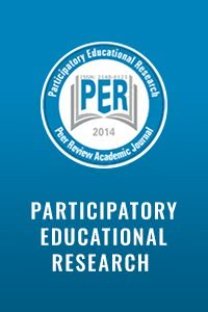Traversing organisational cultures: Building student capacity to lead conversations about child protection policy reform
The Australian child protection system is part of a broader complex, fragmented and multi-level approach to welfare governance. In 2009, with a key strategy being to stimulate ‘joined-up thinking’, Australia launched its first national child protection framework. The policy mantra : ‘Protecting Children is Everyone’s Business’ (COAG 2009) advocated the sharing of responsibility for child protection across organisational entities, service sectors, communities and families. Applied action learning with 18 Australian social work students is discussed as a case study of a participatory education model aimed at liberating student thinking about child protection and at building their capacity to lead conversations about the policy reforms at welfare agencies where they were undertaking a field practicum. Students’ conversations helped to share the notion that Protecting Children is Everyone’s Business (COAG 2009) and thereby contributed to reform strategies for more ‘joined-up thinking’ across organisational entities. Students challenged, observed, shared and analyzed their own thinking, competing agency philosophies and divergent organizational cultures that inhibited the sharing of responsibility for child protection. Student and teacher reflections indicated high levels of motivation for learning when compared to traditional teaching models previously employed. This was due to student empowerment that respected their knowledge and experience, shared control over the learning process, and participation in learning that was liberating, meaningful and which produced observable outcomes – personally, culturally and politically.
Keywords:
Participatory education, adult learning, child protection, policy reform diffusions of innovation,
___
- Australian Association of Social Workers (AASW). (2010). Australian social work education and accreditation standards. Canberra: AASW.
- Boyer, E. (1990). Scholarship reconsidered: priorities of the professoriate. Princeton: The Carnegie Foundation for the Advancement of Teaching.
- Cooper, L. L. (2007). Backing Australia's future: teaching and learning in social work. Australian Social Work, 60(1), 94-106.
- Council of Australian Governments (COAG). (2009). Protecting children is everyone’s business: National framework for protecting Australia’s children 2009–2020. Canberra: FaHCSIA.
- Dewey, J. (2007). Experience and education: Simon and Schuster.
- Grace, M., Townsend, R., Testa, D., Fox, J., O'Maley, P., Custance, J., & Daddow, A. (2013). Student diversity as grass roots internationalisation in social work education.
- Greenhalgh, T., Robert, G., Bate, P., MacFarlane, F., & Kyriakidou, O. (2005). Diffusion of innovations in health service organizations: a systematic literature review. Oxford: Blackwell.
- Gursansky, D., & Le Sueur, E. (2012). Conceptualising field education in the twenty-first century: contradictions, challenges and opportunities. Social Work Education, 31(7), 914-931.
- Haly, M. K. (2010). Neoliberalism and Child Protection: A Deadly Mix. Labour History: A Journal of Labour and Social History(98), 121-141.
- Hare, I. (2004). Defining social work for the 21 century: The International Federation of Social Workers' revised definition of social work. International Social Work, 47(3), 407-424.
- Healy, K., Meagher, G., & Cullin, J. (2009). Retaining novices to become expert child protection practitioners: Creating career pathways in direct practice. British Journal of Social Work, 39(2), 299-317.
- Higgins, D. (2011). Protecting children: Evolving systems. Family Matters, 89, 5-10.
- Higgins, D., & Katz, I. (2008). Enhancing service systems for protecting children. Family Matters(80), 43.
- International Federation of Social Workers. (2014). Update on the refiew of the Global Definition of Social Work. Retrieved 26 February, 2015, from http://ifsw.org/get-involved/global-definition-of-social-work
- Knowles, M. (1972). Innovations in teaching styles and approaches based upon adult learning. Journal of Social Work Education, 8(2), 32-39.
- Knowles, M. (1980). The modern practice of adult education: From pedagogy to andragogy. Englewood Cliffs: Cambridge.
- Kolb, D. A. (2014). Experiential learning: Experience as the source of learning and development: FT Press.
- Lonne, B., Harries, M., & Lantz, S. (2012). Workforce development: A pathway to reforming child protection systems in Australia. British Journal of Social Work, bcs064.
- Mansell, J., Ota, R., Erasmus, R., & Marks, K. (2011). Reframing child protection: A response to a constant crisis of confidence in child protection. Children and Youth Services Review, 33(11), 2076-2086.
- McCallum, D. (2008). Representing and intervening in child abuse law, statistics, community. Communication, Politics & Culture, 41(1), 63-77.
- McDougall, S., & Gibson, C. (2014). Advancing the visibility of the child in adult and child and family services. Communities, Children and Families Australia, 8(1), 21-35.
- McLaren, H. J., Gibson, C., Arney, F., Scott, D., & Brown, L. (2009). Sowing the seeds of innovation: exploring the utility of diffusion of innovation theory. Paper presented at the The History and Future of Social Innovation Conference, 9-21 June, The Hawke Centre, Adelaide, ISBN 978-0-86803-827-8.
- McLaren, H. J., & Kenny, P. L. (2015). Motivating change from lecture-tutorial modes to less traditional forms of teaching. Australian Universities Review, 57(1), 26-33.
- Munro, E. (2010). Learning to reduce risk in child protection. British Journal of Social Work, 40(4), 1135-1151.
- Roche, A. M., Trifonoff, A., White, M., Evans, K., Battams, S., Adams, V., & Scarfe, A. (2014). From policy to implementation: Child and family sensitive practice in the alcohol and other drugs sector. Canberra: National Centree for Education and Training on Addiction, commissioned by the Australian National Council on Drugs.
- Rogers, E. (2003). Diffusion of innovations (5th ed.). New York: Free Press.
- Scott, D. (2009). 'Think Child, Think Family': How Adult Specialist Services Can Support Children at Risk of Abuse and Neglect.
- Shor, I., & Freire, P. (1987). What is the" dialogical method" of teaching? Journal of education, 11-31.
- Zufferey, C., & Gibson, C. (2012). Social Work Education and Children. Australian Social Work(ahead-of-print), 1-11.
- Zufferey, C., Scott, D., & Gibson, C. (2009). Making children visible in social work education. Australian Association for Social Work and Welfare Education.
- ISSN: 2148-6123
- Yayın Aralığı: Yılda 6 Sayı
- Başlangıç: 2014
- Yayıncı: Özgen KORKMAZ
